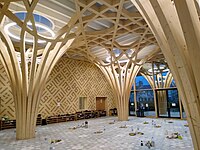A mosque, also called a masjid, is a place of worship for Muslims. The term usually refers to a covered building, but can be any place where Islamic prayers are performed, such as an outdoor courtyard.

Islamic architecture comprises the architectural styles of buildings associated with Islam. It encompasses both secular and religious styles from the early history of Islam to the present day. The Islamic world encompasses a wide geographic area historically ranging from western Africa and Europe to eastern Asia. Certain commonalities are shared by Islamic architectural styles across all these regions, but over time different regions developed their own styles according to local materials and techniques, local dynasties and patrons, different regional centers of artistic production, and sometimes different religious affiliations.

The Blue Mosque in Istanbul, also known by its official name, the Sultan Ahmed Mosque, is an Ottoman-era historical imperial mosque located in Istanbul, Turkey. It was constructed between 1609 and 1617 during the rule of Ahmed I and remains a functioning mosque today. It also attracts a large number of tourists and is one of the most iconic and popular monuments of Ottoman architecture.

The Süleymaniye Mosque is an Ottoman imperial mosque located on the Third Hill of Istanbul, Turkey. The mosque was commissioned by Suleiman the Magnificent and designed by the imperial architect Mimar Sinan. An inscription specifies the foundation date as 1550 and the inauguration date as 1557, although work on the complex probably continued for a few years after this.

The Mosque–Cathedral of Córdoba, officially known by its ecclesiastical name of Cathedral of Our Lady of the Assumption, is the cathedral of the Diocese of Córdoba dedicated to the Assumption of Mary and located in the Spanish region of Andalusia. Due to its status as a former mosque, it is also known as the Mezquita and as the Great Mosque of Córdoba.

The Great Mosque of Xi'an is one of the largest premodern mosques in China. Although the mosque was first built in the year 742 AD during the Tang dynasty, its current form was largely constructed in 1384 AD during Emperor Hongwu's reign of the Ming dynasty, as recorded by the Records of Xi'an Municipality (西安府志).

Mughal architecture is the type of Indo-Islamic architecture developed by the Mughals in the 16th, 17th and 18th centuries throughout the ever-changing extent of their empire in the Indian subcontinent. It developed from the architectural styles of earlier Muslim dynasties in India and from Iranian and Central Asian architectural traditions, particularly Timurid architecture. It also further incorporated and syncretized influences from wider Indian architecture, especially during the reign of Akbar. Mughal buildings have a uniform pattern of structure and character, including large bulbous domes, slender minarets at the corners, massive halls, large vaulted gateways, and delicate ornamentation; examples of the style can be found in modern-day Afghanistan, Bangladesh, India and Pakistan.
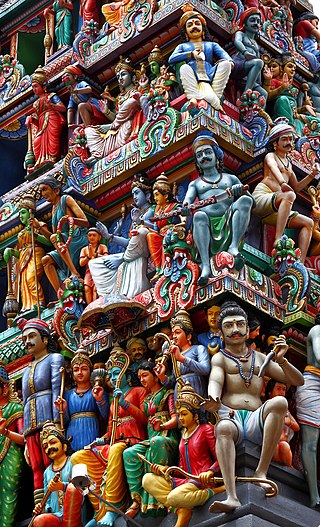
Sacral architecture is a religious architectural practice concerned with the design and construction of places of worship or sacred or intentional space, such as churches, mosques, stupas, synagogues, and temples. Many cultures devoted considerable resources to their sacred architecture and places of worship. Religious and sacred spaces are amongst the most impressive and permanent monolithic buildings created by humanity. Conversely, sacred architecture as a locale for meta-intimacy may also be non-monolithic, ephemeral and intensely private, personal and non-public.

The Taipei Grand Mosque or Taipei Zheng He Mosque is the largest and oldest mosque in Taiwan. Located in the Da'an District of Taipei City, it is Taiwan's most important Islamic structure.
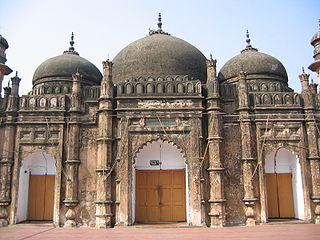
The Khan_Mohammad_Mridha_Mosque is a historical mosque near Lalbagh Fort in Dhaka, Bangladesh.

The Fazl Mosque also known as The London Mosque, is the first purpose-built mosque in London, England. It was opened on 23 October 1926 in Southfields, Wandsworth. At a cost of £6,223, the construction of the mosque and the purchase of the land on which it stands, was financed by the donations of Ahmadi Muslim women in Qadian, Punjab, British India, with support from the British Muslim convert Khalid Sheldrake. Between 1984 and 2019 the Fazl Mosque was the residence of the caliphs of the Ahmadiyya Muslim Community, and therefore its de facto international headquarters. The administrative headquarters now lies at the site of the Islamabad, Tilford.

The Islamic Cultural Center of New York is a mosque and an Islamic cultural center in East Harlem, Manhattan, New York City, United States. It is located at 1711 Third Avenue, between East 96th and 97th Streets. The Islamic Cultural Center was the first purpose-built mosque in New York and continues to be one of the city's largest. The mosque's older dwelling in a townhouse at 1 Riverside Drive is still in continual prayer use as a satellite location.
Environmentally sustainable design is the philosophy of designing physical objects, the built environment, and services to comply with the principles of ecological sustainability and also aimed at improving the health and comfort of occupants in a building. Sustainable design seeks to reduce negative impacts on the environment, the health and well-being of building occupants, thereby improving building performance. The basic objectives of sustainability are to reduce the consumption of non-renewable resources, minimize waste, and create healthy, productive environments.

The Lee III Hall located on the Clemson University Campus in Clemson, SC, generates enough energy to offset its energy use. Its sustainability puts it on the list of one of the most-energy-efficient academic buildings in the United States. The Lee III Hall is considered to be zero net-energy ready. Its design and materials make it eco-friendly and allow it to eliminate its energy consumption with its own renewable energy. Also, the building contains a 30,000 square-foot garden-roof, the largest university garden-roof in the southeastern United States. Lee III was completed and added to the Lee complex in 2012. It is estimated to have a 55,000-square-foot area and a total cost of 31.6 million dollars. Lee III serves for the College of Architecture, Arts and Humanities.
Kenneth L. Haggard is an American architect, educator, and solar pioneer who has designed more than 300 buildings and seen more than 200 of his designs built. He is a licensed architect in California and Florida. He and his partner Polly Cooper were awarded the American Solar Energy Society Passive Solar Pioneer Award in 1996. They have been leaders in both passive solar architecture and the rediscovery of straw bale building.
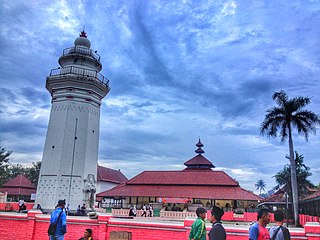
Great Mosque of Banten is a historic mosque in Old Banten, 10 km north of Serang, Indonesia. The 16th-century mosque was one of the few surviving remnants of what used to be the port city of Banten, the most prosperous trading center in the Indonesian archipelago after the fall of Demak Sultanate in mid-16th century.
Chandgaon Mosque is a mosque in Chittagong, Bangladesh, completed in 2007. Designed by Kashef Mahboob Chowdhury, it was shortlisted for the Aga Khan Award for Architecture in 2010.

Architecture Of Saudi Arabia was not different in the pre-oil era during the early 1930s from what it was across the past centuries. Construction and building activities followed a simple and modest style back then, as there was a lack of specialized architects in the modern sense. Instead, native communities would erect their own structures manually through the efforts of builders using basic means and local materials in what came to be known as “traditional architecture.” Every region in Saudi Arabia was famous for its own brand of architecture that expressed its artistic taste. Building materials used at that time were sourced from the local environment, such as clay, rock, palm fronds, and wood. Similarly, the architectural styles passed on from generation to generation reflected each region's climatic and environmental conditions.
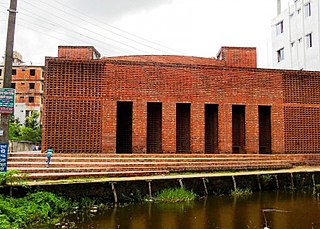
The Bait Ur Rouf Mosque is a distinctive urban mosque located in Dhaka, Bangladesh. Designed by Bangladeshi architect Marina Tabassum and completed in 2012, it has been called a refuge of spirituality in urban Dhaka and received recognition for its beautiful use of natural light and for challenging the status quo of traditional mosque design. Instead of traditional symbolism such as domes and minarets, the mosque relies on open space and the rich interplay of light and shadow to create a prayer space that elevates the spirit.
Contemporary mosque architecture combines traditional elements of mosque architecture with modern aesthetics, materials and techniques. As a religious sites, mosques date back to the 7th century. Contemporary approaches combine original tradition with modernity and sustainability, reflecting advancements in architectural theory and practice.





